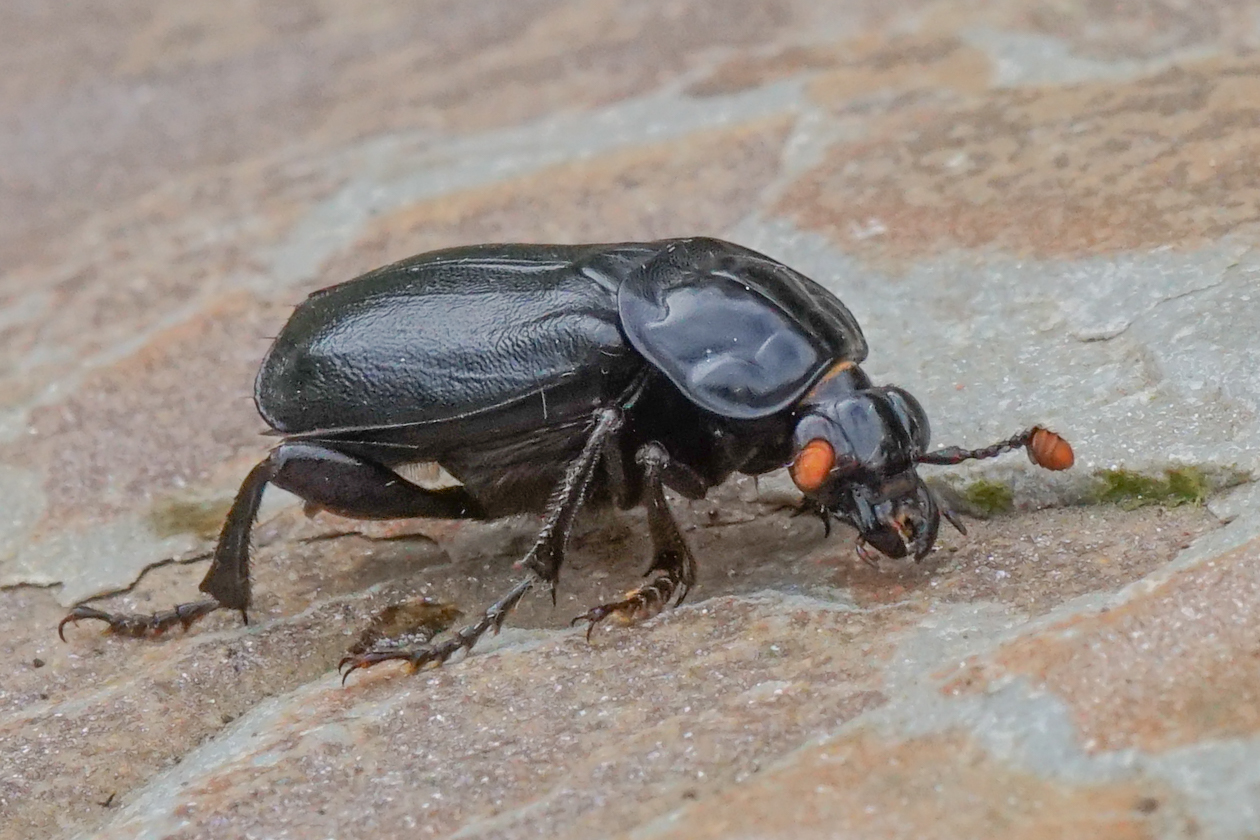
Paul writes: I see lots of black beetles and many of them are quite difficult to identify. This is one of the easier ones. It is quite large, 18 – 26mm long, with a chunky looking body and distinctive orange tipped antennae. It belongs to the family Silphidae, commonly known as burying beetles. They emerge in spring and can be seen right through until October. It is rare to see them in the day but they are attracted to light, so can turn up in the evening in well-lit areas of patios or gardens. I often run a moth trap in my garden in and regularly find them inside the trap. This one appeared in early May this year and I’ve had a string of visitors since. They can be found in most areas of Britain.
Black Sexton Beetles (Nicrophorus humator) are carrion feeders. They have an incredible sense of smell and are strong fliers. This allows them to locate suitable carrion over long distances. Once they find a body, usually a mouse or small bird, the male and female work together in burying it. They do this by excavating under the body so that it sinks into the ground and is eventually buried. The female will then lay her eggs next to the corpse, which will provide food for the larvae once they hatch.
[registration_form]